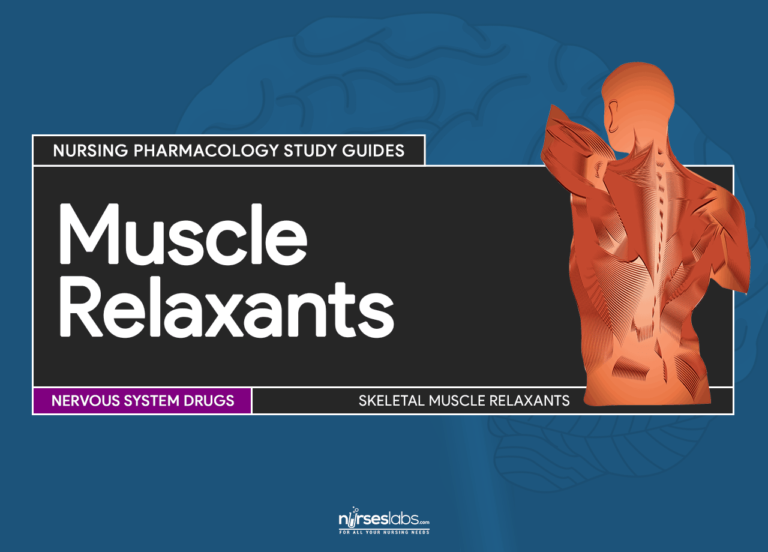Local damage to skeletal muscles can happen due to injuries and accidents. If the damage is severe, normal muscular functioning and central nervous system may be permanently damaged.
Spasticity is a condition characterized by sustained contractions of the muscle. It is due to the loss of nerves responsible for the maintenance of balance in corresponding muscle activities.
Skeletal muscle relaxants are agents that can treat both temporary and permanent neuronal damage. They do this by interfering with the pain and spasm cycle.
Table of Contents
- Muscle Relaxants: Generic and Brand Names
- Disease Spotlight: Neuromuscular Abnormalities
- Centrally Acting Muscle Relaxants
- Direct-Acting Skeletal Muscle Relaxants
- Recommended Resources
- See Also
- References and Sources
Muscle Relaxants: Generic and Brand Names
Here is a table of commonly encountered muscle relaxants, their generic names, and brand names:
- Centrally Acting Skeletal Muscle Relaxants
- baclofen (Lioresal)
carisoprodol (Soma)
chlorzoxazone (Paraflex) - cyclobenzaprine (Flexeril)
- methocarbamol (Robaxin)
- orphenadrine (Banflex, Flexoject)
- tizanidine (Zanaflex)
- baclofen (Lioresal)
- Direct Acting Skeletal Muscle Relaxants
- botulinum toxin type A (Botox)
- botulinum toxin type B (Myobloc)
- dantrolene (Dantrium)
- incobotulinumtoxin A (Xeomin)
Disease Spotlight: Neuromuscular Abnormalities
Muscle Spasm
- A disturbance to the normal flow of information in the CNS caused by diseases, infections, toxins, and injuries can lead to disturbances ranging from spasms to paralysis.
- Muscle spasm results from violent and painful involuntary muscle contraction usually caused by muscle overstretching, joint wrenching, and tendon or ligament tearing. When this happens, the injured area floods sensory impulses to the spinal cord and it responds by eliciting intense muscle contraction. Pain from muscle spasms is due to lactic acid accumulation that occurs when blood flow is cut off during contractions. Sensory impulses continue to flood and a vicious cycle of contraction develops.
Spasticity
- Muscle spasticity occurs when damaged neurons are within the CNS rather than the peripheral areas. The site of damage makes this abnormality permanent. There is an interruption in the balance of excitatory and inhibitory influences within the CNS which can lead to hypertonia (excessive muscle stimulation) and consequent contractures and structural changes. There is now loss of coordinated muscle activity.
Centrally Acting Muscle Relaxants
- Centrally acting muscle relaxants work in the CNS to interfere with reflexes that cause muscle spasms. They essentially destroy or lyse spasms and are often referred to as spasmolytics.
- Other modalities of spasm and pain relief like rest, heat application, and physical therapy are used in addition to these drugs.
Therapeutic Action
The desired and beneficial actions of centrally acting muscle relaxants are as follows:
- The exact mechanism of action of skeletal muscle relaxants is not fully understood but it is thought that it involves the participation of upper or spinal interneurons.
- It inhibits monosynaptic and polysynaptic spinal reflexes. Other than that, it is a CNS depressant.
Indications
Centrally acting muscle relaxants are indicated for the following medical conditions:
- Primary indication is relief of discomfort associated with acute, painful musculoskeletal conditions as adjunct to rest, physical therapy, and other measures.
- Alleviation of signs and symptoms of spasticity, may be of use in spinal cord injuries or spinal cord diseases.
Here are some important aspects to remember for indication of centrally acting muscle relaxants in different age groups:
Children
- Safety and effectiveness not established in children. However, children older than age 12 may be given with metaxalone.
- Baclofen, on the other hand, is used to relieve spasticity associated with cerebral palsy.
- Methocarbamol is the drug of choice for children with tetanus. Children should be monitored closely for CNS and GI toxicity.
Adults
- They should be cautioned to avoid activities that require alertness (e.g. driving) because drugs can cause confusion and drowsiness.
- Muscle spasm in adults related to anxiety can be treated with diazepam.
- Pregnant and lactating women should be advised to use contraception and alternative method of feeding, respectively.
Older adults
- They are more likely to experience adverse effects associated with these drugs.
- Carisoprodol is the centrally acting skeletal muscle relaxant of choice for older patients and for those with hepatic or renal impairment.
Pharmacokinetics
Here are the characteristic interactions of centrally acting muscle relaxants and the body in terms of absorption, distribution, metabolism, and excretion:
| Route | Onset | Peak | Duration |
| Oral | 1 h | 2 h | 4-8 h |
| Intrathecal | 30-60 min | 4 h | 4-8 h |
| T1/2: 3-4 h Metabolism: not metabolized Excretion: kidney (urine) |
Contraindications and Cautions
The following are contraindications and cautions for the use of centrally acting muscle relaxants:
- Allergy to centrally acting skeletal muscle relaxants. Prevent hypersensitivity reactions.
- Skeletal muscle spasms caused by rheumatic disorders. Do not benefit from these drugs.
- History of epilepsy. CNS depression and imbalance caused by drugs may exacerbate seizure disorder.
- Cardiac dysfunction. Muscle function may be depressed.
- Condition marked by muscle weakness. Can be exacerbated by drugs.
- Hepatic, renal dysfunction. Interfere with drug metabolism and excretion.
- Baclofen is not indicated for treatment of spasticity that contributes to locomotion, upright function, or increased function. Blocking this spasticity results in loss of these functions.
Adverse Effects
Use of centrally acting muscle relaxants may result to these adverse effects:
- CNS: depression, drowsiness, fatigue, weakness, confusion, headache, insomnia.
- CV: hypotension, arrhythmias
- GI: nausea, dry mouth, anorexia, constipation.
- GU: urinary frequency, enuresis, urinary urgency
- Chlorzoxazone may turn urine into purple-red color.
- Tizanidine has been associated with liver toxicity and hypotension in some patients.
- Baclofen is tapered over 1-2 weeks to prevent development of psychoses and hallucinations.
Interactions
The following are drug-drug interactions involved in the use of centrally acting muscle relaxants:
- Other CNS depressants, alcohol: increased CNS depression
Nursing Considerations
Here are important nursing considerations when administering this drug:
Nursing Assessment
These are the important things the nurse should include in conducting assessment, history taking, and examination:
- Assess for mentioned contraindications and cautions (e.g. drug allergy, cardiac depression, rheumatic disorder, pregnancy and lactation, etc.) to prevent untoward complications.
- Conduct thorough physical assessment (temperature, skin color and lesion, CNS orientation, affect, reflexes, bilateral grip strength, spasticity evaluation; bowel sounds and urine output) to obtain baseline data.
- Monitor liver and renal function tests to detect potential adverse effects.
Nursing Diagnoses
Here are some of the nursing diagnoses that can be formulated in the use of this drug for therapy:
- Acute pain related to GI and CNS effects
- Disturbed thought processes related to CNS effects
- Risk for injury related to CNS effects
Implementation with Rationale
These are vital nursing interventions done in patients who are taking centrally acting muscle relaxants:
- Provide additional spasm and pain relief like rest periods, heat application, NSAIDs as ordered, and positioning to augment the effects of the drug at relieving the musculoskeletal discomfort.
- Discontinue drug at any sign of liver and renal dysfunction to prevent severe toxicity.
- Monitor respiratory status to evaluate adverse effects and arrange for appropriate dose adjustment or discontinuation of the drug.
- Provide comfort measures to help patient tolerate drug effects.
- Provide safety measures (e.g. adequate lighting, raised side rails, etc.) to prevent injuries.
- Educate client on drug therapy to promote understanding and compliance.
Evaluation
Here are aspects of care that should be evaluated to determine effectiveness of drug therapy:
- Monitor patient response to therapy (improvement in muscle spasm and relief of pain; improvement in muscle spasticity).
- Monitor for adverse effects (e.g.CNS changes, GI depression, urinary urgency, etc).
- Evaluate patient understanding on drug therapy by asking patient to name the drug, its indication, and adverse effects to watch for.
- Monitor patient compliance to drug therapy.
Direct-Acting Skeletal Muscle Relaxants
- Direct-acting skeletal muscle relaxants enter the muscle to prevent muscle contraction directly.
Therapeutic Action
The desired and beneficial actions of direct-acting skeletal muscle relaxants are as follows:
- Dantrolene acts within skeletal muscle fibers and interfere with calcium ion release from the muscle tubules. Therefore, the fibers are prevented from contracting. It does not interfere with neuromuscular transmission and does not affect skeletal muscle surface membrane.
Indications
Here are some important aspects to remember for indication of direct-acting skeletal muscle relaxants in different age groups:
Children
- Safety and effectiveness not established in children.
- Dantrolene is used to treat upper motor neuron spasticity in children.
- Dose should be accurately calculated based on body weight and it increases over time.
- Children are at increased risk of CNS and GI toxicity.
Adult
- They should be cautioned to avoid activities that require alertness (e.g. driving) because drugs can cause confusion and drowsiness.
- Pregnant and lactating women should be advised to use contraception and alternative method of feeding, respectively.
- Premenopausal women are at increased risk for hepatotoxicity in association with use of dantrolene.
Older adults
- They are more likely to experience adverse effects associated with these drugs.
- Older women who are receiving hormone replacement therapy have the same risk for hepatotoxicity with premenopausal women in association with use of dantrolene.
Pharmacokinetics
Here are the characteristic interactions of direct-acting skeletal muscle relaxants and the body in terms of absorption, distribution, metabolism, and excretion:
| Route | Onset | Peak | Duration |
| Oral | Slow | 4-6 h | 8-10 h |
| IV | Rapid | 5 h | 6-8 h |
| T1/2: 9 h (oral), 4-8 h (IV) Metabolism: N/A Excretion: kidney (urine) |
Contraindications and Cautions
The following are contraindications and cautions for the use of direct-acting skeletal muscle relaxants:
- Allergy to direct-acting skeletal muscle relaxants. Prevent hypersensitivity reactions
- Spasticity contributes to locomotion, upright position, increased function. These functions will be lost if spasticity were blocked
- Active hepatic disease. Interfere with the metabolism of the drug
- Pregnancy. Potential adverse effects to the fetus
- Lactation. May cross breast milk and may cause adverse effects in the infant
- Women and patients older than age 35. Caution is applied because of increased risk of potentially fatal hepatocellular disease
- History of liver disease or previous dysfunction. Increases liver’s susceptibility to cellular toxicity
- Respiratory depression. Exacerbated by muscular weakness
- Cardiac disease. Cardiac muscle depression may be a risk
Adverse Effects
Use of direct-acting skeletal muscle relaxants may result to these adverse effects:
- CNS: drowsiness, fatigue, weakness, confusion, headache, insomnia, visual disturbances
- GI: GI irritation, diarrhea, constipation, abdominal cramps
- GU: urinary frequency, enuresis, urinary urgency, crystalline urine with pain or burning on urination
- Others: acne, abnormal hair growth, rashes, photosensitivity, abnormal sweating, chills, nyalgia
- Dantrolene can cause direct hepatocellular damage and potentially fatal hepatitis
- Botulinum toxins are associated with anaphylactic reactions characterized by headache, dizziness, muscle pain, paralysis
Interactions
The following are drug-drug interactions involved in the use of direct-acting skeletal muscle relaxants:
- Estrogens: increased incidence of hepatocellular toxicity if used with dantrolene
- Neuromuscular junction blockers, lincosamides, quinidine, magnesium sulphate, anticholinesterase, succinylcholine, polymyxin, aminoglycosides: increased risk of additive effects
Nursing Considerations
Here are important nursing considerations when administering this drug:
Nursing Assessment
These are the important things the nurse should include in conducting assessment, history taking, and examination:
- Assess for mentioned contraindications and cautions (e.g. drug allergy, cardiac depression, rheumatic disorder, pregnancy and lactation, etc.) to prevent untoward complications.
- Conduct thorough physical assessment (temperature, skin color and lesion, CNS orientation, affect, reflexes, bilateral grip strength, spasticity evaluation; bowel sounds and urine output) to obtain baseline data.
- Monitor liver and renal function tests to detect potential adverse effects.
Nursing Diagnoses
Here are some of the nursing diagnoses that can be formulated in the use of this drug for therapy:
- Acute pain related to GI and CNS effects
- Disturbed thought processes related to CNS effects
- Risk for injury related to CNS effects
Implementation with Rationale
These are vital nursing interventions done in patients who are taking direct-acting skeletal muscle relaxants:
- Assess area before administering botulinum toxins because area with active infection will be exacerbated by injection.
- Monitor intravenous access sites of dantrolene for potential extravasation because drug is alkaline and very irritating to tissues.
- Periodically discontinue dantrolene for 2-4 days as ordered to monitor therapeutic effectiveness.
- Discontinue drug at any sign of liver dysfunction to prevent adverse effects.
- Provide comfort measures to help patient tolerate drug effects.
- Provide safety measures (e.g. adequate lighting, raised side rails, etc.) to prevent injuries.
- Educate client on drug therapy to promote understanding and compliance.
Evaluation
Here are aspects of care that should be evaluated to determine effectiveness of drug therapy:
- Monitor patient response to therapy (improvement in spasticity, movement and activities).
- Monitor for adverse effects (e.g. CNS changes, diarrhea, liver toxicity, etc).
- Evaluate patient understanding on drug therapy by asking patient to name the drug, its indication, and adverse effects to watch for.
- Monitor patient compliance to drug therapy.
Practice Quiz: Muscle Relaxants
Quiz time! Let’s see what you’ve learned from this pharmacology guide for muscle relaxants. Take this 5-item quiz!
1. All of the following are direct-acting skeletal muscle relaxants, except:
A. botulinum toxin type A
B. Myobloc
C. Dantrium
D. None of the above
2. Which of the following is the priority nursing intervention for children receiving muscle relaxants?
A. Assess bowel sounds and activity.
B. Provide skincare.
C. Administer drug with food.
D. Both A and B.
3. What is the centrally acting muscle relaxant of choice for children with tetanus?
A. botulinum toxin type B
B. Dantrium
C. Baclofen
D. Methocarbamol
4. How long should Baclofen be tapered to prevent the development of psychoses and hallucinations?
A. 12-21 days
B. 1-10 days
C. 7-14 days
D. 7-21 days
5. A patient who had a dose of botulinum toxin type A complained of headache and dizziness. What is the most appropriate nursing response?
A. Provide comfort measures.
B. Institute safety measures.
C. Assess for possible anaphylactic reactions
D. Both A and B
1. Answer: D. None of the above.
Botulinum toxin type A (Botox Cosmetic), botulinum toxin type B (Myobloc), and dantrolene (Dantrium) are all direct-acting skeletal muscle relaxants.
2. Answer: A. Assess bowel sounds and activity.
Children are especially at an increased risk of CNS and GI toxicity.
3. Answer: D. Methocarbamol.
Both botulinum toxin type B and Dantrium are direct-acting skeletal muscle relaxants. Baclofen is indicated for relief of spasticity in children with cerebral palsy.
4. Answer: C. 7-14 days
5. Answer: C. Assess for possible anaphylactic reactions.
Botulinum toxins are associated with anaphylactic reactions characterized by headache, dizziness, muscle pain, paralysis
Recommended Resources
Our recommended nursing pharmacology resources and books:
Disclosure: Included below are affiliate links from Amazon at no additional cost from you. We may earn a small commission from your purchase which will help support us. Thank you! For more information, check out our privacy policy.
Pharm Phlash! Pharmacology Flash Cards #1 BEST SELLER!
Test-yourself review cards put critical clinical information for nearly 400 of the top generic medications at your fingertips. And, you can count on them for accuracy, because each card is based on content from Davis’s Drug Guide for Nurses. Increase your test scores in pharmacology class.
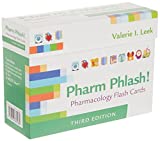
Focus on Pharmacology (8th Edition)
Focus on Nursing Pharmacology makes challenging concepts more approachable. Engaging learning features cultivate your clinical application, critical thinking and patient education capabilities. This updated 8th edition builds on your knowledge of physiology, chemistry and nursing fundamentals to help you conceptualize need-to-know information about each group of drugs.
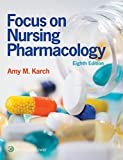
Pharmacology Made Incredibly Easy (Incredibly Easy! Series®)
Nursing pharmacology guide offers step-by-step guidance so you can grasp the fundamentals in enjoyable Incredibly Easy style. This is the perfect supplement to class materials, offering solid preparation for NCLEX® as well as a handy refresher for experienced nurses. Colorfully illustrated chapters offer clear, concise descriptions of crucial nursing pharmacology concepts and procedures.
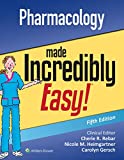
Lehne’s Pharmacology for Nursing Care (11th Edition)
The Eleventh Edition of Lehne’s Pharmacology for Nursing Care provides a thorough understanding of key drugs and their implications for nursing care. This text, written by renowned nursing educators, helps you comprehend and apply pharmacology principles. A clear and engaging writing style simplifies complex concepts, making even the most challenging pharmacology content enjoyable. We recommend this book if you want a comprehensive nursing pharmacology guide.
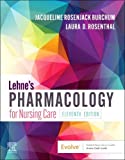
Nursing Drug Handbook
Nursing2023 Drug Handbook delivers evidence-based, nursing-focused drug monographs for nearly 3700 generic, brand-name, and combination drugs. With a tabbed, alphabetical organization and a “New Drugs” section, NDH2023 makes it easy to check drug facts on the spot.
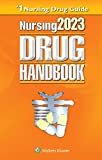
Pharmacology and the Nursing Process
The 10th edition of Pharmacology and the Nursing Process offers practical, user-friendly pharmacology information. The photo atlas contains over 100 unique illustrations and photographs depicting drug administration techniques. Updated drug content reflects the most recent FDA drug approvals, withdrawals, and therapeutic uses.
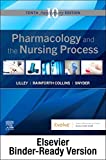
Mosby’s Pharmacology Memory NoteCards: Visual, Mnemonic, and Memory Aids for Nurses
The 6th edition of Mosby’s Pharmacology Memory NoteCards: Visual, Mnemonic, & Memory Aids for Nurses incorporates illustrations and humor to make studying easier and more enjoyable. This unique pharmacology review can be utilized as a spiral-bound notebook or as individual flashcards, making it ideal for mobile study.
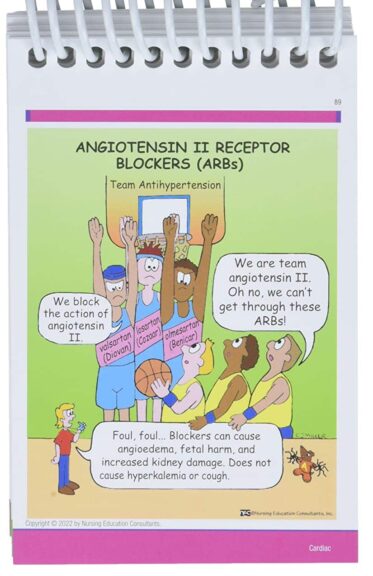
See Also
Here are other nursing pharmacology study guides:
- Nursing Pharmacology – Study Guide for Nurses
Our collection of topics related to nursing pharmacology - Pharmacology Nursing Mnemonics & Tips
These nursing mnemonics aim to simplify the concepts of pharmacology through the use of a simple, concise guide. - Generic Drug Name Stems Cheat Sheet
Learn about these generic drug name stems to help you make sense of drugs easier! - Common Drugs and Their Antidotes
A guide to drug antidotes that nurses should be familiar about. - IV Fluids and Solutions Guide & Cheat Sheet
Get to know the different types of intravenous solutions or IV fluids in this guide and cheat sheet. - Drug Dosage Calculations NCLEX Practice Questions (100+ Items)
Care to take the challenge? This quiz aims to help students and registered nurses alike grasp and master the concepts of medication calculation.
Drug Guides NEW!
Individual drug guides and nursing considerations for the most common medications used in nursing pharmacology:
- Acetaminophen (Tylenol)
- Aspirin
- Atorvastatin (Lipitor)
- Enoxaparin (Lovenox)
- Furosemide (Lasix)
- Gabapentin
- Hydromorphone (Dilaudid)
- Lisinopril
- Metoprolol
- Morphine
Gastrointestinal System Drugs
Respiratory System Drugs
- Antihistamines
- Bronchodilators and Antiasthmatics
- Decongestants
- Expectorants and Mucolytics
- Inhaled Steroids
- Lung Surfactants
Endocrine System Drugs
- Adrenocortical Agents
- Antidiabetic Agents
- Glucose-Elevating Agents
- Hypothalamic Agents
- Insulin
- Parathyroid Agents: Bisphosphonates, Calcitonins
- Pituitary Drugs
- Sulfonylureas
- Thyroid Agents
Autonomic Nervous System Drugs
- Adrenergic Agonists (Sympathomimetics)
- Adrenergic Antagonists (Sympatholytics)
- Anticholinergics (Parasympatholytics)
- Cholinergic Agonists (Parasympathomimetics)
Immune System Drugs
Chemotherapeutic Agents
- Anthelmintics
- Anti-Infective Drugs
- Antibiotics
- Antifungals
- Antineoplastic Agents
- Antiprotozoal Drugs
- Antiviral Drugs
Reproductive System Drugs
Nervous System Drugs
- Antidepressants
- Antiparkinsonism Drugs
- Antiseizure Drugs
- Anxiolytics and Hypnotic Drugs
- General and Local Anesthetics
- Muscle Relaxants
- Narcotics, Narcotic Agonists, and Antimigraine Agents
- Neuromuscular Junction Blocking Agents
- Psychotherapeutic Drugs
Cardiovascular System Drugs
References and Sources
References and sources for this pharmacology guide for Muscle Relaxants:
- Karch, A. M., & Karch. (2011). Focus on nursing pharmacology. Wolters Kluwer Health/Lippincott Williams & Wilkins. [Link]
- Katzung, B. G. (2017). Basic and clinical pharmacology. McGraw-Hill Education.
- Lehne, R. A., Moore, L. A., Crosby, L. J., & Hamilton, D. B. (2004). Pharmacology for nursing care.
- Smeltzer, S. C., & Bare, B. G. (1992). Brunner & Suddarth’s textbook of medical-surgical nursing. Philadelphia: JB Lippincott.
